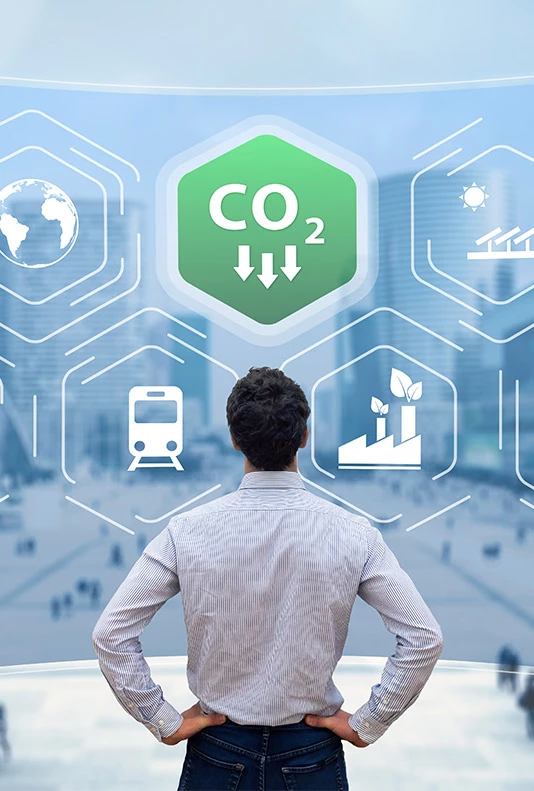SOCOTEC’s energy and carbon assessments are informed by our comprehensive combination of expert services: energy modeling and analysis, building envelope consulting, commissioning and auditing (MEP and Envelope), and “green” consulting services (to address synergistic air quality and material issues).
We apply our expertise in modeling, design and construction as third-party, independent consultants, with no interest other than the one of the owner.
Our personnel have a long history – and therefore significant experience - with low energy buildings. We have a broad view of current advances in energy efficiency and carbon, and as important, from experience, we know what actually works.
Examples of excellence in the Energy Efficiency Community:
- The first US Net Zero building - Oberlin College, Joseph Lewis Center for Environmental Studies
- Net-zero FBI Pease building in the Northeast
- Net-zero Walmart supermarkets (studies)
- Currently (in design) for Queens Botanical Garden Education Center
- The first environmental residential towers – all residences at Battery Park City, starting with the Solaire
- The first environmental US office high-rises – Four Times Square and One Bryant Park (the latter very high use intensity)
- The largest US Passive House building – The House at Cornell Tech dormitory, and in design – the largest residential Passive House high-rise (Holmes, in NYC)
- Very low carbon, all-electric buildings:
- 2 million sqft office building, under construction, NYC
- 220,000 sqft office building, under construction, NYC
- Office/maintenance facilities, Hiawatha, Minneapolis
- Geothermal systems of all types, as exemplified by the following (out of many):
- foundation-embedded geothermal (Trevor Day School, the first in NYS - followed by the 561 Greenwich Office building, under construction, which will be lowest-carbon building of this type in NYC)
- Lake – Cornell University
- River – Work Trade Center
- Open-loop – Brooklyn Children’s Museum
- Closed loop – Westchester Country Club
- Standing column - Knox Hall at Columbia University
- Renewables, such as:
- Building-mounted, starting with Solaire and continuing with many other buildings
- Parks, such as the Queens West park
- Audits of portfolios of multiple buildings for clients in Office, Residential and Hospitality buildings of the largest developers and owners in nation
- Our global work includes offices, hotels and residential towers in Great Britain, Germany, Italy, Canada, Mexico, China, Middle East, Turkey, Brazil, Japan and Korea. We worked on some of the largest developments, such as the Shanghai Tower, Seoul International Financial center, and also on smaller, yet important projects such as the Italcementi Headquarters in Bergamo and a Goldman Sachs office in London
- Our work with real time and day ahead ISO pricing data allows us to find opportunities of asset switching vis a vis carbon impacts
A Kit of Advanced Tools and Equipment:
We use a range of tools and procedures on and off the field. They range from:
- An analysis of the energy bills using databases and error analysis in the M&V projects, effect of retrofits on envelope, from THERM for simple conditions, to 3D conduction modeling, CFD and WUFI moisture transfer
- We model lighting and daylighting, thermal comfort, solar radiation, air movement around and within buildings, etc.
- For energy use and carbon, we employ a range of software programs, such as DOE 2.2 and EnergyPlus
- For analyzing piping and equipment in existing buildings, we use in-house eddy current testing apparatus, ultrasonic thickness testers and metallurgical specialists with scanning electron microscopes for advanced studies

Talk to our experts
Our Approach:

Our Approach:

Global Consideration
We examine the possibilities for carbon reduction globally – and in tandem with the other environmental goals (e.g., water, IAQ)

Cooperation Opportunities
We examine interactions with the landlord in leased spaces, and assess the possibility of cooperation.

Building Renovations
Our in-house building envelope group and its substantial expertise in existing building renovation can support the evaluation process with input on building envelope improvement opportunities at the same time while evaluating HVAC. In order to implement substantial energy efficiency improvements and carbon reductions, HVAC and building envelope solutions work together to generate enhanced benefits.

Lighting
For Lighting, we look at opportunities now including addressable lighting, but be aware that LPD will continue to be reduced – which increases the importance of heating, and of part-load operation of HVAC systems.

HVAC
For HVAC, we understand flexibility is important to change to all-electric in the intermediate terms when not possible now.

NYC
Local Law 97

Starting in 2025 (2024 energy data), NYC sets emission limits and tightens it significantly in 2030 (2029 energy data). Current limits passed on May 18, 2019.
Limit – 9.87kg/SF in 2024-25
Limit – 5.26kg/SF in 2029-30
$268/Ton of GHG
Our team’s recent greenhouse gas reduction projects have included, but are not limited to:
- 101 Park Avenue
- 445 Park Avenue
- 25 East 77th Street (Mark Hotel)
- The Union League Club
- Residential portfolio of 26 buildings
- 30 Rockefeller Center: 6 separate floors for a large financial service company
Starting in 2025 (2024 energy data), NYC sets emission limits and tightens it significantly in 2030 (2029 energy data). Current limits passed on May 18, 2019.
Limit – 9.87kg/SF in 2024-25
Limit – 5.26kg/SF in 2029-30
$268/Ton of GHG
Our team’s recent greenhouse gas reduction projects have included, but are not limited to:
- 101 Park Avenue
- 445 Park Avenue
- 25 East 77th Street (Mark Hotel)
- The Union League Club
- Residential portfolio of 26 buildings
- 30 Rockefeller Center: 6 separate floors for a large financial service company
Want to know more about our Carbon Reduction & Life Cycle Assessment services?







